
Willow trees stand out uniquely with their graceful, flowing branches. They are deciduous woody plants of the genus Salix and family Salicaceae. Most Willows originate in the Northern Hemisphere with about 300-400 species (and many hybrids) worldwide.
The greatest diversity within the Willow species is found in their size range. Canada is home to 54 native species with only perhaps 7 or 8 of them reaching tree size. Some Willow species can grow as tall as 49 feet while some dwarf shrubs grow to only a few centimeters high on the tundra.
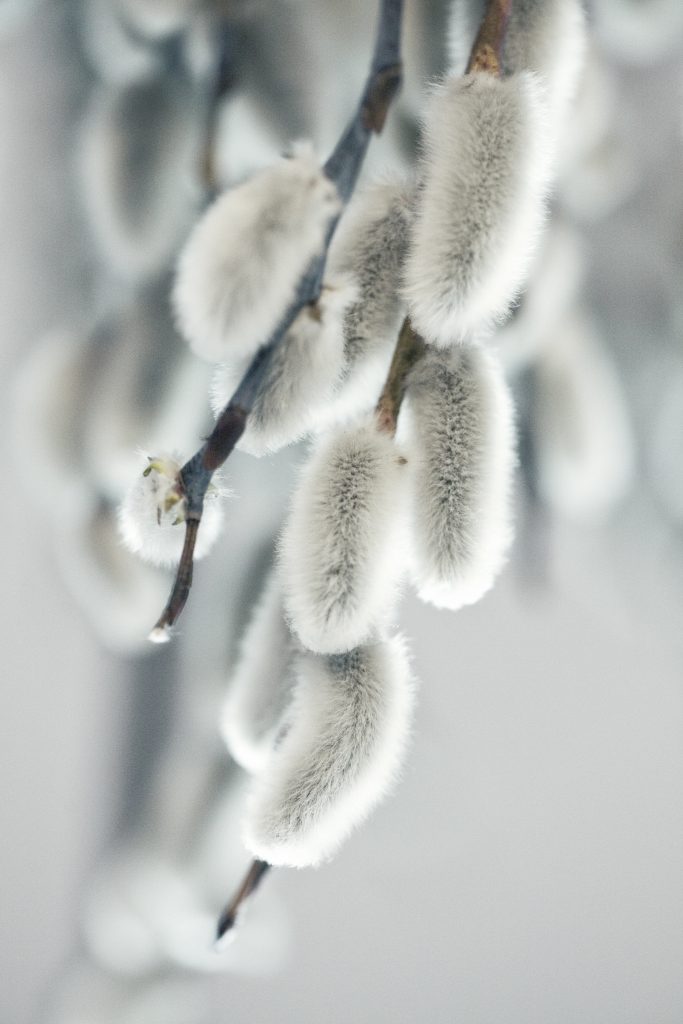
One of signs that spring is on the way is the appearance of “pussy willows” – the fuzzy nubs which pop up on the branches of certain willow trees. These nubs resemble the soft silver tufts of tiny cat paws, and they really do feel like fur.
Have you ever wondered what they are and why they are fuzzy? These are the flowers of the willow tree, just before they come into full bloom. Because pussy willows, such as the Salix discolor or Salix caprea for example, are such early bloomers the soft, fur-like coating acts like little individual winter coats, insulating each flower from cold temperatures.
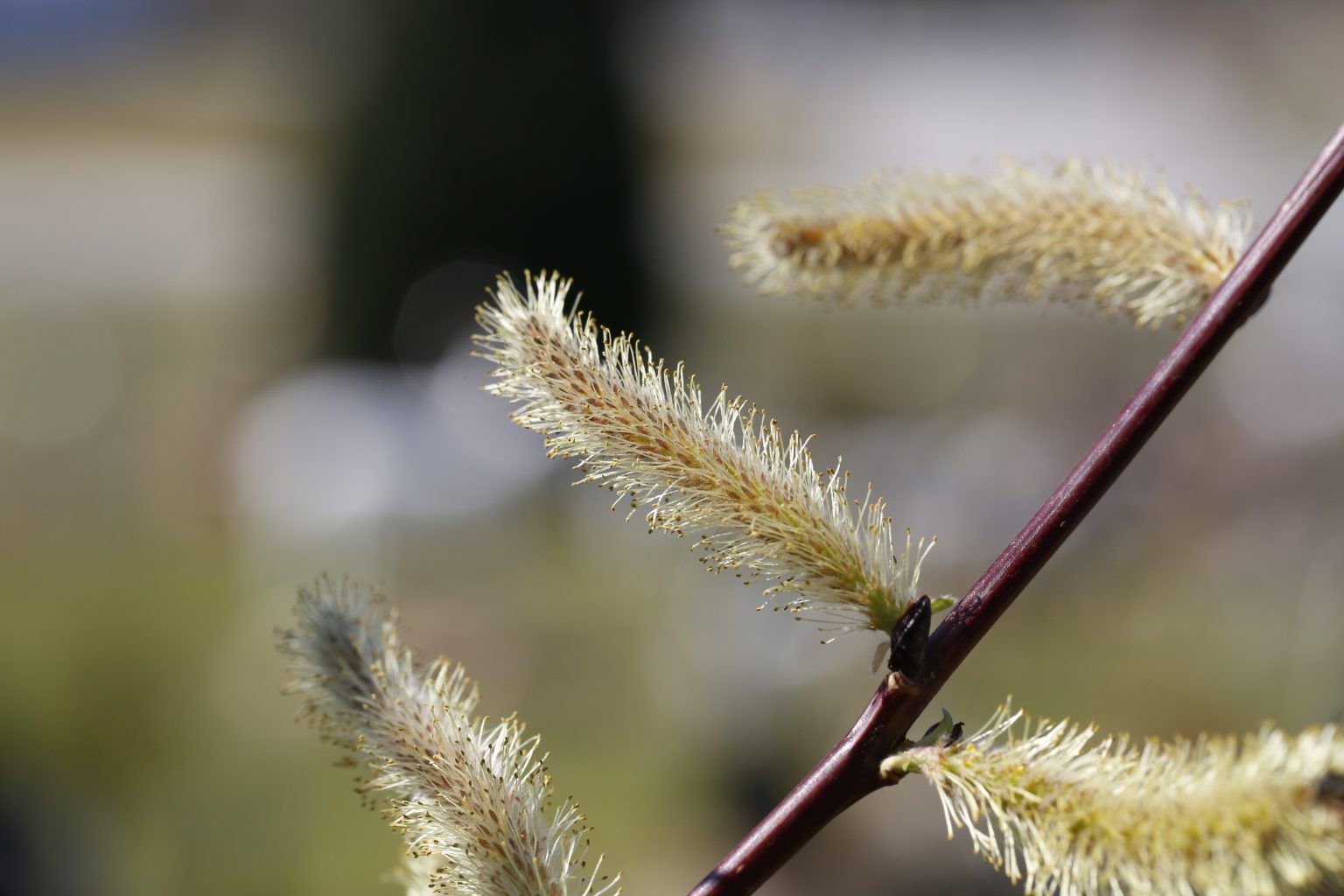
Most Willows have simple, slender leaves set in alternate patterns on the twigs. Identification of willow species at this time can be challenging because (with one exception) their male and female flowering catkins appear before the leaves do. Also, individual trees bear either male or female flowers (catkins) but not both – so two trees of the same species can look quite different.
Even when they are no longer furry and come into full bloom, willow flowers do not look like flowers because they don’t have petals, fragrance or bright colors. “Flowers” such as those found on willows, birch and beech were originally called catkins because they resemble the tails of cats; the word originated from the Dutch word for kitten, “katteken”.
Whether male or female, the flowers do produce nectar, and this means pollination can be done by insects. Their fruit is a capsule which contains tiny seeds with little tufts of hairy fibers, allowing for them to disperse with the wind.
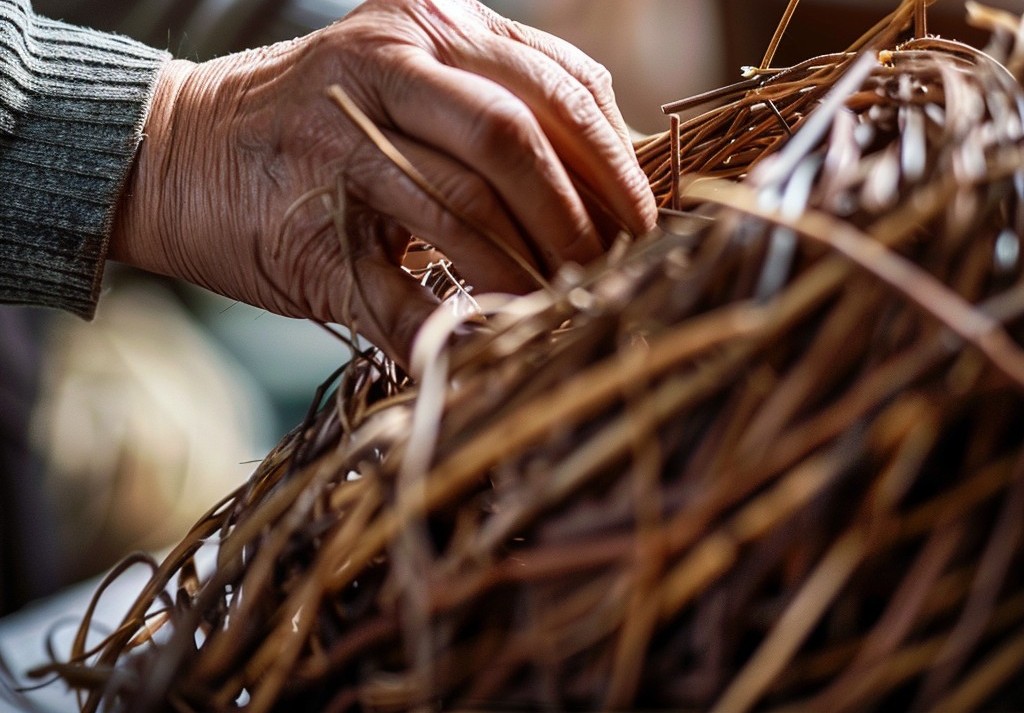
The Indigenous people revered the Willow tree. They saw the uniting of their strong and extensive root systems below the ground as a symbol of unity, providing a calming and grounding effect. This was especially significant to those who had experienced disruption or trauma in their life because the Indigenous people realized the pain of such events could keep replaying, causing continued suffering within a person’s nervous system for a long time. That is why Willow branches were used as the frame for ceremonial sweat lodges; the rib-like frame provided a safe womb-like space for ceremony and healing.
The Willow tree’s healing properties extend beyond the spiritual. Willows have been valued as a food source and medicine by the Indigenous people of North America, the Chinese, Egyptians and Greeks for thousands of years. One of the active ingredients (salicin) in willow leaves and bark dulls pain. There are references to its use for pain relief by Sumerians as far back as 4,000 years ago. We still use it to this day, but we know it as aspirin. And of course, there are the ancient practices of crafting beautiful willow baskets, structures and furniture. Savvy businesspeople in Europe are investing in it, impressed with the durability of willow furniture as well as willow’s ability to grow very fast. It is a perfect renewable resource because at the end of the useful life of baskets, furniture or similar structures they can be composted and returned to the natural cycle rather than as landfill.
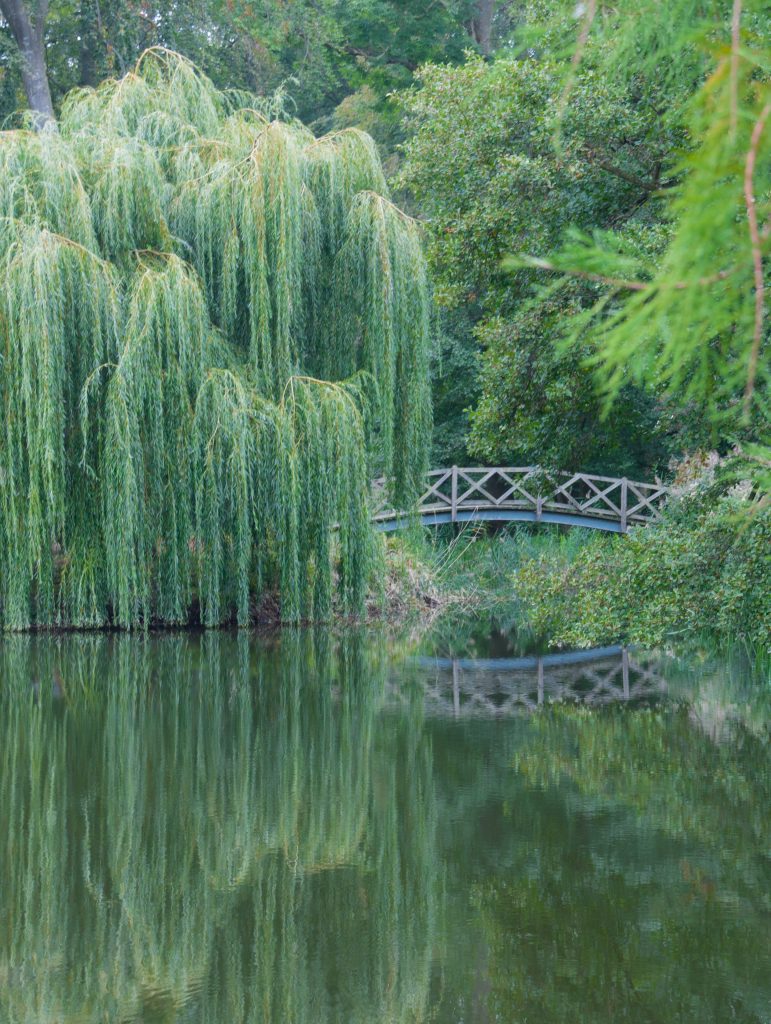
One of the best known of the willows in modern times is the fascinating and iconic Weeping Willow. Observing trees, especially from a distance, it is often difficult to tell a maple from an oak, but the weeping willow is instantly recognizable. The origin of its name is found in the graceful downward flow of the branches said to resemble cascading tears.
The scientific name Salix is from the Celtic word, which means “near water”. Willows do need lots of water and are often found near streams or by rivers.
Carl Linnaeus, a Swedish botanist gave Weeping Willows the botanical name Salix babylonica because he thought they were the willows of Babylon described in Psalm 137 of the Bible. That biblical willow is now believed to have been a Euphrates poplar, a relative of the cottonwood tree. Mr. Linnaeus, along with many North Americans, did not know true weeping willows originated in China and not introduced to North America until the 18th century.
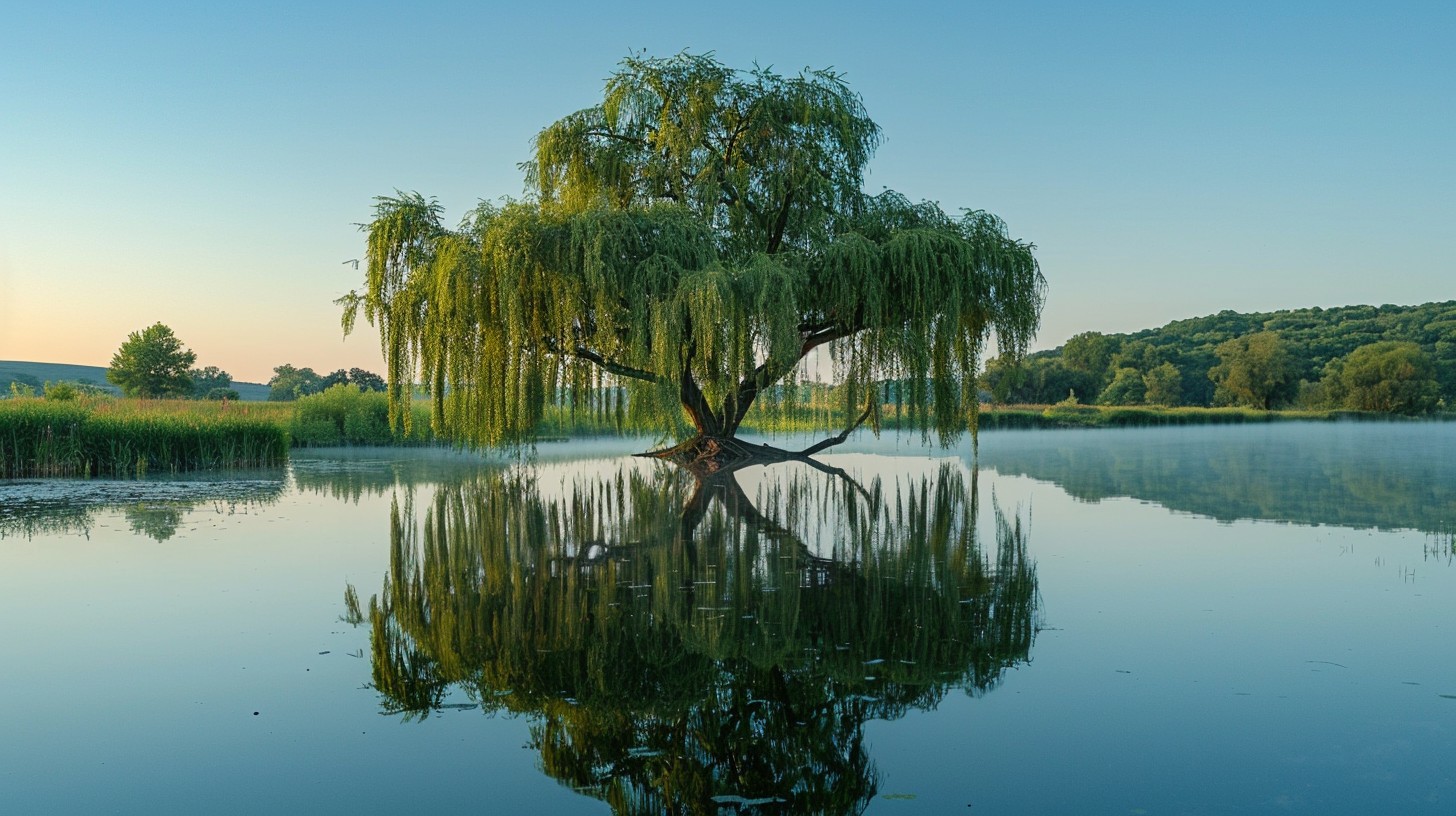
Weeping Willows tend to be shorter than most other trees, staying within the 45-to-70-foot range, but unlike other trees, they can be almost as wide as they are tall.
Willows are also incredibly speedy with their growth. After the first 3 years of establishing themselves, their growth pattern easily outstrips other trees, adding about 8 feet of growth a year. To put it in perspective, many tree species add not-quite-an-inch to the diameter of their trunks and maybe 2 feet of height in a typical year. What willows gain in growth is lost in longevity as they are not as long-lived as other species. The life span typically ranges from 30 to 50 years, depending on conditions.
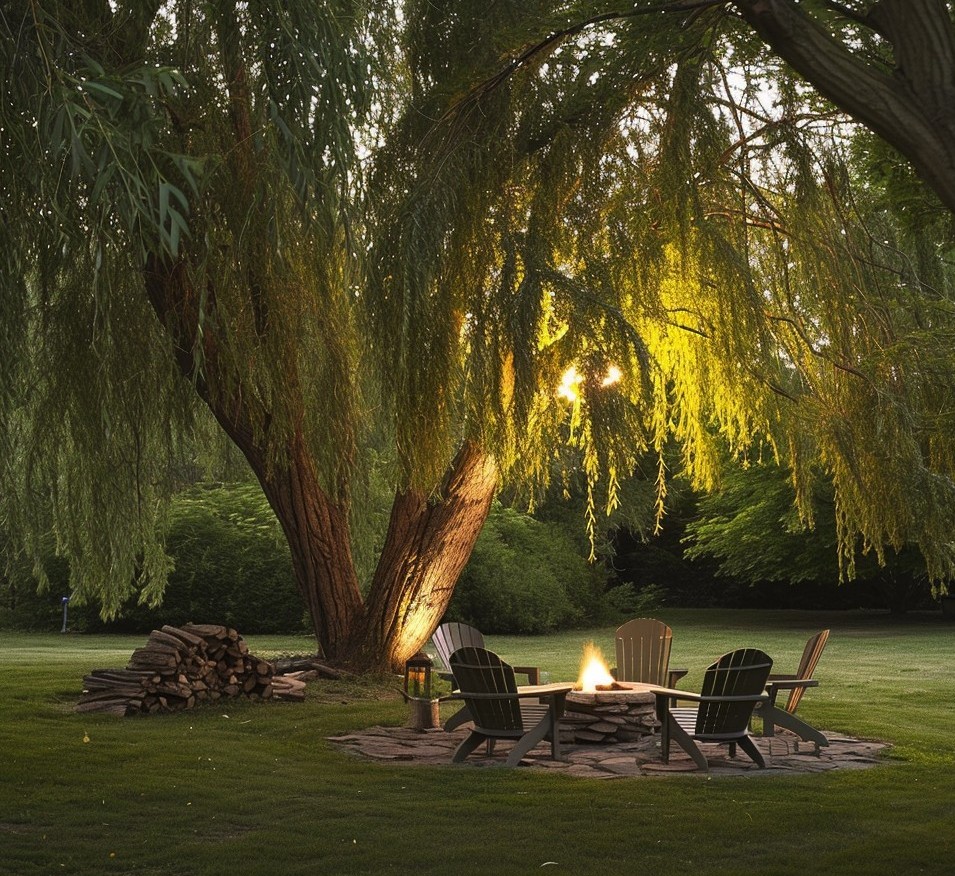
Willows have a very long association with humans so it not surprising that some of our sayings and practices up to today were born of this association. It was an old Celtic custom to knock on a willow tree to send bad luck away. This is where the custom of “touch wood” or “knock on wood” had its origins.
In Europe, the people believed the wind rustling in willows were the voices elves that whispered and talked as people passed beneath them. Another popular belief at the time was if you confessed your secrets to a willow tree, the secret would forever stay within the wood.
The Celtic tree calendar placed Willow as associated with springtime, from about the middle of April to the middle of May. They called moon in the time of the willow “Saille”, a name symbolic of knowledge and spiritual growth. Willows were planted near their homes to keep danger away.

Weeping Willows have inspired countless artists, poets, painters and writers:
From ancient times, Helice (which means “willow”) was said to be Zeus’ nurse. The willow muse, sacred to poets, was called Heliconian. Apollo gifted the Greek poet, Orpheus, with a lyre carved from willow.
Shakespeare used the Weeping Willow’s atmosphere of melancholy in Hamlet (as Ophelia drowns after the willow branch breaks) and in Othello (in Desdemona’s Willow song).
More recently Bruce Lee, the famous martial artist and actor, was quoted as saying, “Notice that the stiffest of trees is most easily cracked, while the willow survives by bending in the wind”.
And finally, there is the “Whomping Willow”, a fictional tree guarding a secret passage at Hogwarts in the Harry Potter series as well as “Old Man Willow,” another willow-based fictional character from Tolkien’s “The Lord of the Rings”. These tree personalities have captured reader’s imaginations across the world.
With so many paths to into the world of Willows, why choose only one?
